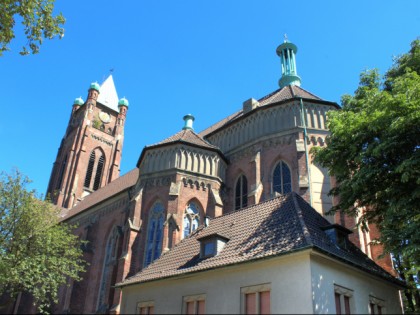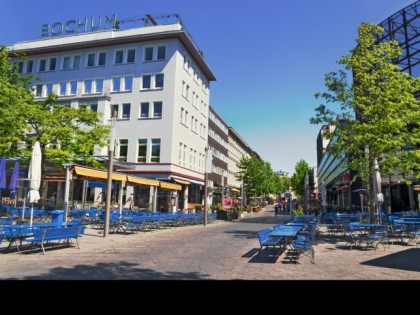Bochum belongs to the oldest cities in Germany – it was first mentioned in 890. But until the 19th century it has not played any considerable role in the history of the empire. A powerful impulse for the city development became development of rich coalfields and success of the local steel industry. In this period large number of Germans rushed to Bochum in search of job. Thus, if in 1850 there were only 4.5 thousand people living in the city, already in 1904 number of residents reached 100 thousand! When after the World War II mines started closing down, former miners gradually transferred to work with Adam Opel who opened a branch of his company here in 1961.
Notwithstanding its industrial past, today Bochum does not give the impression of a dull industrial zone. It is a very green city with a huge park in the centre and a beautiful botanical garden at the Ruhr University. If earlier Bochum was proud of the fact that it had the largest number of mines in Germany concentrated in its outskirts, today it shows with the same pride its achievements in the sphere of culture. Several theatres, its own symphonic orchestra, various museums and art galleries, busy calendar of festivals and exhibitions – all of this gave Bochum its deserved fame as the cultural capital of Ruhr area. One of the cultural icons of the city is musical “Starlight Express” by Andrew Lloyd Webber which has been successfully played here for almost thirty years. And even though it is performed in German, the universal language of music and a spectacular show – actors ride roller blades on stage! – make the performance a popular entertainment among tourists.
Centre of the party life of Bochum is the town quarter Bermudadreieck (or Bermuda3eck) located in five minutes walk from the main railway station. In this “Bermuda Triangle”, on a comparatively small territory, a number of cafes, bars, restaurants, cinemas, night clubs and discos are located. Since 1986, Europe’s largest music festival Bochum Total is conducted here every July, with up to million music lovers coming to Bochum! The other side of this popularity is that prices for food and drinks in Bermuda3eck are considerably higher than outside it.
If you want to get acquainted with the local delicacies in Bochum, don’t miss your chance to try the cult fast food – currywurst. This simple dish is a small sausage cut in pieces, seasoned with a sauce made of ketchup or tomato paste and curry powder. Experts state that the main thing in currywurst is not the sausage (though naturally, it must be of appropriate quality) but the sauce, that’s why owners of the most popular tents ardently protect the secret. Even though currywurst was invented in Berlin in the hungry post-war years, Bochum residents seriously consider that the local version is the tastiest in the country. And judging by the tourist feedback, they have all the right to do so. Among the fans of the Ruhr currywurst is the Bochum patriot Herbert Grönemeyer who dedicated another hit to this “steak of a little man”. When he performs it during his concerts, the entire audience sings along!










 Parks and recreation
Parks and recreation
 Museums and Exhibitions
Museums and Exhibitions
 Architectural Monuments
Architectural Monuments




